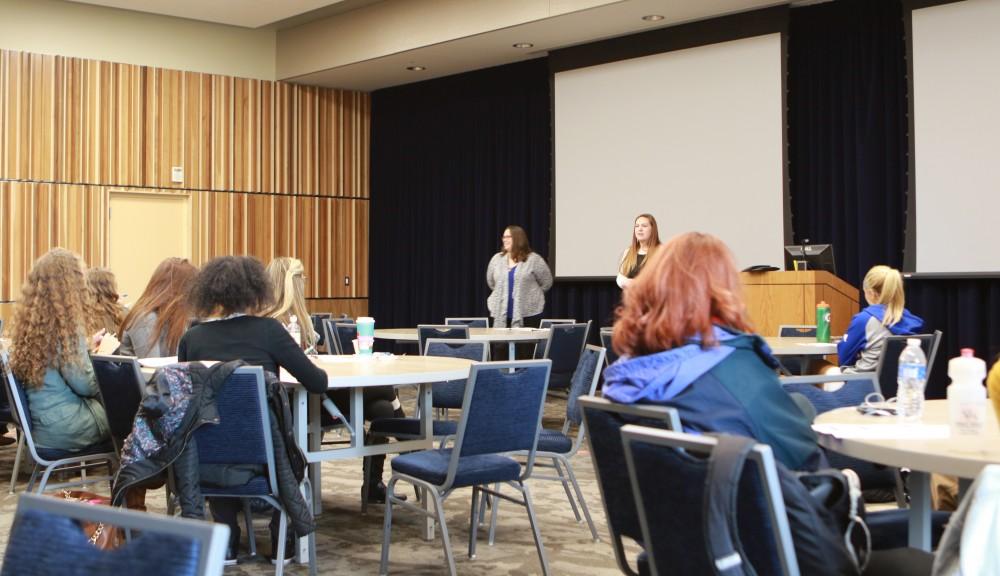Women’s Center promotes bystander intervention

GVL / Teagan Wilkinson Bring in the Bysstander; intervention training
Oct 22, 2015
Last year, there was a rise of reported sexual assaults at Grand Valley State University, which has subsequently led to an increase in efforts to educate the GVSU community about what they can do to help.
One initiative that GVSU has started is training students, faculty and staff on how to be active bystanders. An active bystander is someone who takes action when they see an incident happen, whether that is as simple as a rude comment or something as serious as an attack.
The Women’s Center hosted a bystander intervention training session last Friday. The event, titled “Bringing in the Bystander,” took place in the Mary Idema Pew Library and was open to all GVSU community members.
For this training, GVSU partnered up with the Michigan Coalition to End Domestic and Sexual Violence (MCEDSV). The two organizations aimed to prepare the attendees to be active bystanders toward gender-based violence in the GVSU community.
“When (attendees) see a bias incident, somebody telling a racist, sexist, homophobic joke or a potential sexual assault, they know how to recognize that and step in and hopefully prevent that from happening,” said Aubrey Dull, the Violence Against Women Act Grant graduate assistant.
Bringing in the Bystander started off with a presentation about rape culture. This presentation was lead by Mary deYoung, professor of sociology and a GVSU Title IX investigator.
After deYoung concluded her portion of the training, the floor was turned over to two members of the MCEDSV, the senior program director Lisa Winchell-Caldwell and the interim assistant director Sarah Prout Rennie.
“Our priority was for students to feel empowered to use their existing skills, leadership and opportunities to build on the incredible work already being done to create the violence-free campus community they want,” Winchell-Caldwell said.
However, the event was not solely for students.
“It was designed to be an afternoon training for student leaders, faculty, student engagement staff, and other interested parties to further build up the bystander engagement and response already present on campus,” Winchell-Caldwell said.
The training was lecture-based with short videos and small group discussions mixed in. The idea was to keep students and faculty engaged in what was going on in order for them to pass their learning on to others in the community. The coordinators hope for a butterfly effect to lead others to being active and effective bystanders.
“I think it was really empowering for the students to realize that they can make a difference and they can make change on campus,” Dull said.
The event was only one of many attempts by the university to do as much as possible to inform the campus community about sexual misconduct.
“We’ve had a couple of campus organizations get in touch with (the Women’s Center) being interested in doing more,” Dull said. “Eyes Wide Open (is) interested in perhaps doing one next semester.”
More events and trainings like this could be coming in the near future. The event was considered successful by its organizers, so they are staying hopeful that they will continue to be able to educated the GVSU community on how to make an impact.
“The participants were clearly passionate about the issue and had a great deal of knowledge about both sexual assault and their campus community,” Winchell-Caldwell said.
For more information about future events, visit www.gvsu.edu/womenscen.






















